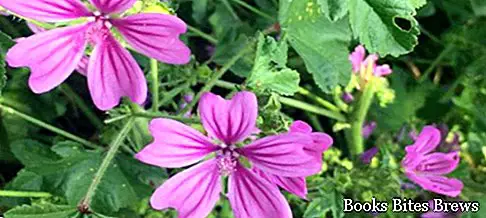What is mallow used for, what are the characteristics of this plant, rich in mucilage and vitamins, how to prepare an infusion or a decoction to take advantage of its particular benefits.
Mallow healing properties
Grass characterized by up to one meter long stems, erect and branched, the mallow has leaves with a long petiole and palminervia shape, with an irregular serrated margin.
The flowers, gathered in bundles of six in the axil of the upper leaves, are quite large, pinkish in color and with a calyx welded to the calyx.
In June, or at the beginning of flowering, the leaves are collected, to be dried in the open air in a shady place, and the flowers, which are not yet fully open.
The main component of the plant is mucilage, there are also vitamins A, B1, C, E.
About the properties, the mallow is emollient and sedative in cases of chronic intestinal and gastric catarrh.
It is used against irritation of the digestive tract and urinary organs.
In some places, the herbal tea of the whole plant, made with milk, is a popular remedy for tuberculosis.
Another common use is to practice gargle, in case of inflammatory diseases of the mouth, jaws, gums and upper airways.
In external use it is effective against boils and inflammatory skin abscesses.
To prepare an infusion or decoction, 15 grams of flowers or 30 grams of leaves are needed per liter of water.
Recommended readings- Barberry: what it is used for, therapeutic properties of berries
- Mallow: what it is used for, therapeutic properties, infusion, decoction
- Holly: meaning, properties, infusion
- Birch: tree characteristics, herbal tea leaves, charcoal
- Absinthe: what it is, characteristics of officinal herb
A decoction for external use requires up to 50 leaves per liter of water.




